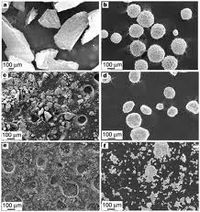Mill Materials
Mill Materials are materials that are used when processing on Mills. Milling is a cutting process in which material is removed from a block by a rotating tool.
In milling the cutting tool is moved in all three dimensions to achieve the desired part shape. In milling the cutting tool usually rotates about an axis that is perpendicular to the table that holds the material to be cut. A milling machine looks somewhat like a drill press at first glance. A cutting tool protrudes down from a rotating spindle. A block of material is placed on a moving table below the cutter. While the cutting tool turns, a computer controls the vertical (Z axis) motion of the cutter and the horizontal (X and Y axis) motion of the block of material. The cutter is guided to move through the material, removing portions to create shapes.
Additionally, the material can be turned to various orientations in the middle of the process and cutting tools of various shapes can be used. Material is usually removed by both the end and the side of the cutting tool. Some common cutter shapes include
Milling has several advantages over other manufacturing processes. It is cost effective for short runs. Complex shapes and high dimensional tolerances are possible. Smooth finishes can be achieved. Milling can produce almost any 2D or 3D shape provided that the rotating cutting tools can reach the material to be removed. Examples of milled parts include engine components, mold tooling, complex mechanisms, enclosures, etc.
Materials
Milling can process most rigid materials including most metals: Aluminum, Stainless Steel, Copper, Steel, Brass, Titanium, Sterling Silver, Bronze, etc.
And hard plastics and other materials: Nylon, Acetal, Polycarbonate, Polystyrene, Acrylic, Fiberglass, Carbon fiber, PTFE, ABS, PVC, etc.
Types of Milling Materials
Plain endmill
Used for most milling - creates walls with straight 90 deg edges and sharp corners at the bottom of recesses.
Chamfer endmill
Creates 45 deg bevels on the top edge of a wall or recess
Grooving endmill
Creates rectangular grooves in side walls
Ball mill
Creates rounded edges at the bottom edge of a recess
Rounding endmill
Creates rounded edges at the top edge
Angle endmill
Creates walls at angles other than 90 deg
Video
